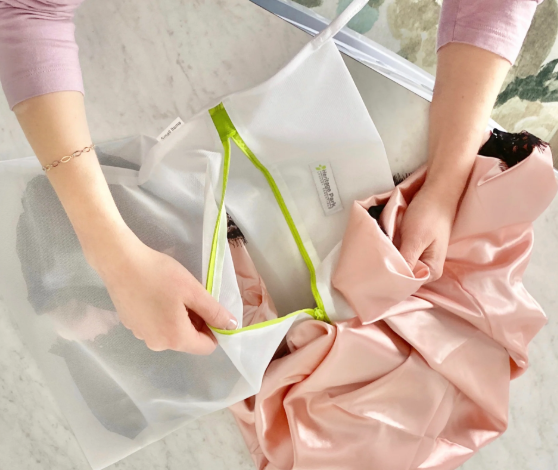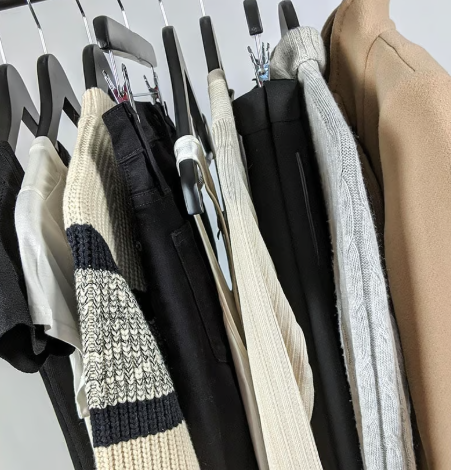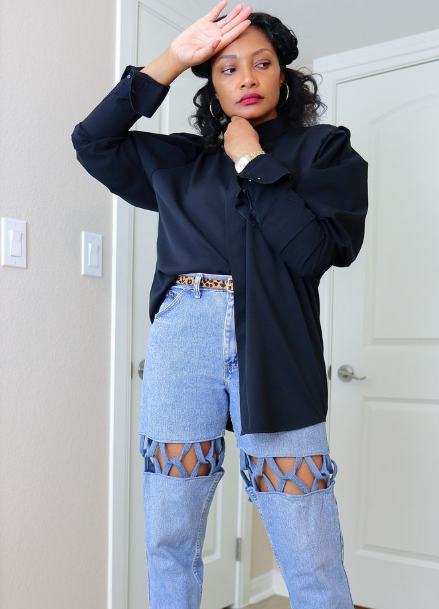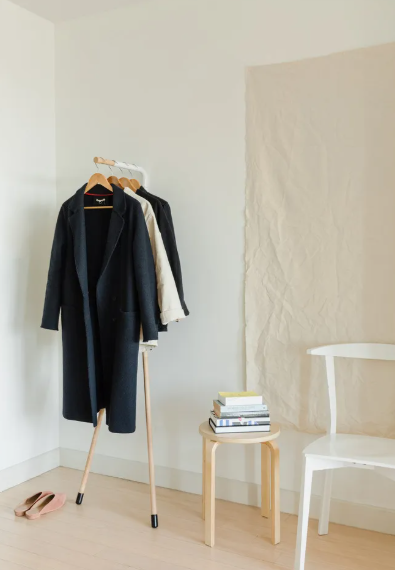
Protecting Your Clothes from Sun Damage: Tips for Maintaining Fabric Quality
We all love the sunshine, but its UV rays can cause unseen harm to your clothing over time. From fading vibrant colors to weakening fabric fibers, the sun’s rays break down materials and accelerate wear. Luckily, there are simple yet effective steps you can take to prevent sun damage and keep your clothes looking fresh for longer. Here’s a guide to protecting your wardrobe from the sun.
Why Sun Exposure Damages Clothes
While the sun feels great on your skin, it’s not kind to your clothing. Prolonged exposure to sunlight can cause fading, discoloration, and weaken fabric fibers. Ultraviolet (UV) rays break down the chemical bonds in fabrics, which leads to color loss and the fabric becoming brittle over time. Dark colors, such as black, red, and blue, are particularly vulnerable to fading, while lighter shades, like white and pastel colors, can become yellowed.
The damage caused by the sun isn’t just cosmetic. Over time, UV rays can also weaken the fabric’s structure, especially with delicate materials like silk, lace, and chiffon. Clothes exposed to the sun regularly may feel rougher or thinner as the fibers deteriorate. Preventing sun damage will help maintain the integrity and lifespan of your clothing.
Best Fabrics for Sun Protection
Some fabrics naturally offer more protection against sun damage than others. Synthetic fabrics, like polyester, nylon, and acrylic, are better at blocking UV rays than natural fibers like cotton, wool, and silk. Polyester, in particular, is often used for outdoor clothing due to its sun-resistant qualities.
For clothing that will be frequently exposed to sunlight, look for garments made with built-in UV protection. Many brands offer clothes labeled with a UPF (Ultraviolet Protection Factor) rating, which indicates how well the fabric blocks UV rays. Fabrics with a tighter weave, like denim or canvas, are also better at preventing sunlight penetration compared to looser materials like linen or chiffon.
If you have delicate fabrics, such as silk or lace, that are more prone to damage, it’s crucial to store and care for them properly to minimize the effects of sun exposure.
How to Store Clothes to Avoid Sun Damage
Proper storage is just as important as how you care for your clothes while wearing them. Clothes left in direct sunlight, even when not worn, are at risk of fading and sun damage.
- Choose a Cool, Dark Space: Store your clothes in closets or drawers away from direct sunlight. If your wardrobe has transparent doors, use curtains or shades to block light.
- Use Garment Bags: For valuable or delicate items, cloth garment bags can protect your clothing from sunlight and dust. Avoid plastic garment bags, as they trap moisture and may cause mildew.
- Rotate Your Clothes: Regularly rotate items in your closet to avoid prolonged exposure to sunlight. This is especially helpful for fabrics that are more vulnerable to fading, such as silk or bright-colored garments.
By taking these simple steps, you can reduce your clothing’s exposure to sunlight and protect them from damage.
Tips for Air Drying Clothes Without Fading
Air drying clothes is an eco-friendly option, but drying them outside in direct sunlight can cause fading, especially for dark-colored garments. Here are some tips to minimize the risk of sun damage while drying:
- Hang Clothes Inside Out: This simple step helps protect the visible side of the fabric from UV rays, preventing color fading.
- Dry in the Shade: Whenever possible, dry your clothes in a shaded area, like under a porch or in the shade of a building. If drying indoors, hang clothes near an open window or use a drying rack in a shaded room.
- Dry Light-Colored Items in the Sun: Lighter colors, like whites and pastels, are less likely to show noticeable sun damage. If drying outside, these items are better suited for direct sunlight.
- Avoid Peak Sun Hours: The sun’s rays are most intense between 10 a.m. and 4 p.m. To minimize fading, try drying your clothes early in the morning or late in the afternoon when the sun is less powerful.
By following these air-drying practices, you can protect your clothes from sun damage while still enjoying the benefits of natural drying.
Using UV-Blocking Sprays and Treatments
For extra protection against the sun, UV-blocking sprays are an excellent option. These treatments act like sunscreen for your clothes, forming a protective barrier that helps prevent fading and fabric degradation.
- How to Apply UV-Blocking Sprays: Clean and dry your clothes before applying the spray. Hold the bottle a few inches away from the fabric and apply an even coat. Allow the garment to dry completely before wearing it. UV-blocking sprays typically last through several washes, but reapply them after washing for continued protection.
- Best Garments for UV Treatments: UV-blocking sprays are ideal for outdoor clothing like swimsuits, jackets, and hats. They can also be applied to everyday clothes that are often exposed to the sun, providing an added layer of protection.
Incorporating UV-blocking treatments into your clothing care routine can greatly reduce the risk of sun damage, especially for fabrics that are prone to fading.
Preventing Discoloration on Brightly Colored Garments
Brightly colored clothes are particularly vulnerable to sun bleaching. Vibrant reds, blues, and greens can lose their intensity when exposed to direct sunlight. Here’s how to protect your colorful clothes:
- Wash Carefully: Always wash bright colors in cold water with a detergent designed for colored fabrics. Cold water helps preserve the vibrancy and reduces the risk of fading.
- Dry Indoors: When possible, dry brightly colored clothes indoors or in the shade. If drying outside, hang them inside out and limit direct sun exposure.
- Store in the Dark: Store colorful clothes in closets, drawers, or garment bags to protect them from light and sun damage.
- Choose the Right Fabrics: Synthetic fabrics like polyester and acrylic tend to hold their color better than natural fibers. If sun exposure is frequent, opt for UV-protected synthetic fabrics for better long-term color retention.
Taking these simple precautions will help maintain the brightness and vibrancy of your favorite colorful garments.
How to Protect Outdoor Fabrics and Clothing
Outdoor clothing, such as swimsuits, hiking gear, and patio furniture covers, is constantly exposed to the sun, making it more susceptible to fading and damage. Here’s how to protect your outdoor fabrics:
- Opt for UV-Resistant Materials: Many outdoor fabrics are now made with UV-resistant materials, which offer greater protection against sun damage. Look for UPF-rated outdoor clothing and gear.
- Use Protective Covers: For outdoor furniture, use breathable covers to protect against UV rays and moisture. When storing outdoor clothing, keep them in shaded areas to minimize exposure to direct sunlight.
- Rinse and Dry After Use: After outdoor activities, rinse your clothes to remove chemicals like chlorine and salt, which can increase sun damage. Allow them to air dry in the shade to prevent fading.
By using UV-resistant materials and following these protective steps, you can significantly extend the life of your outdoor fabrics and clothing.
When to Replace Sun-Damaged Clothing
Even with the best precautions, sun damage can still occur, especially for items exposed to sunlight for long periods. Over time, sun exposure can cause fabrics to become brittle, fade, and lose their structural integrity. Here’s when to replace sun-damaged clothes:
- Excessive Fading: If a garment has faded significantly and its original color is no longer visible, it may be time to replace it.
- Fabric Weakening: Clothes that feel thin, rough, or brittle from sun exposure should be replaced, as they are more prone to tearing and wear.
- Loss of Function: For outdoor gear like swimsuits and hiking clothes, if the fabric no longer performs well or offers adequate UV protection, it’s time to get a new one.
Regularly assess your clothing for signs of sun damage and replace items that are no longer functional to keep your wardrobe in good condition.
By following these tips, you can protect your clothes from the harmful effects of sun exposure and ensure that they remain in excellent condition for longer. From choosing the right fabrics to using UV-blocking treatments, there are plenty of ways to prevent fading and preserve your favorite garments.






